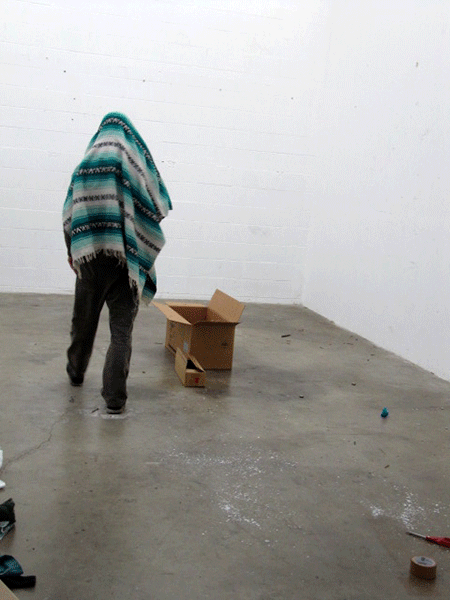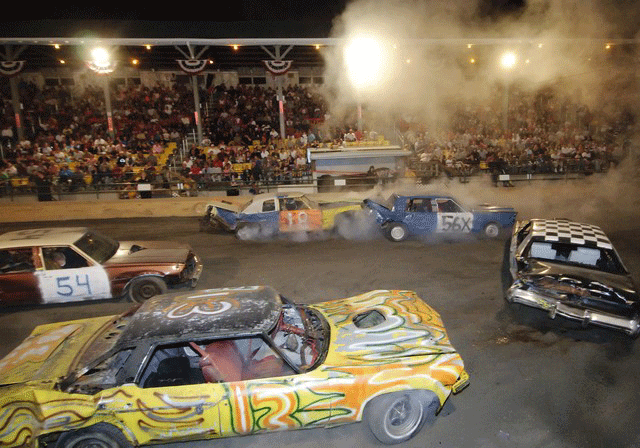January 19, 2011
Phil Wagner at UNT/TLED

If you're in New York, be sure to see Phil Wagner's show at UNT/TLED!
I should have had this up a week ago, the opening was last Sunday. I wrote up a statement for Joel Mesler, after a conversation we had about Phil's work over drinks at Hop Louie. There was this vision I had about Phil driving backwards through art history like a demolition derby... or was it a cloud and prisms and rays shooting through planes of art history... or both? I could see the planes align to a vanishing point.
I'd like to sit Phil down with a camera and video a conversation with him about how he made work from discards from his part time work at MOCA as a preparator. I think this was a hugely transitional phase for him. He was a balls out painter for some time partly during and before that. He kept destabilizing his painting practice until he arrived at a formal praxis which eventually internalized instability in terms of assemblage. It was a short step from the trash bins at MOCA to the street, and I see his work today inflected with the orientation to contemporary art at an order of which is institutional and authoritative. I prefer my influences to come out of my pores, and I think this is what he does. Phil is such a down to earth guy that I'd have to twist his arm, but I'd bet he'd let me. Posted by Dennis at January 19, 2011 4:36 PM
(Source.)
The Readyunmades of Phil Wagner. Phil Wagner's recent work deepens his exploration in assemblage, a peculiar kind of composition of found objects which in Wagner's hands luminously reflect his many years of prior commitment to the practice of painting. Following a long tradition of artists who source their materials from depleted furniture and debris cast off for the trash collector on the street, he repositions these elements along multiple axis and joins the various fragments with a light touch to form a three dimensional, highly formal experience inevitably redolent with rich allusions to painting.
Beuys, Rauschenberg, Duchamp, three artists repeatedly referred to in conversation with Wagner about his recent work. How can these paragons of art history make sense other than a random collection of referents, what story can be told with such characters in play? If we consider here that the career trajectory of Phil Wagner thus far has taken him from the tradition of painting towards assemblage, it might be possible to view his current work as in a productive tension with his past. It is possible to imagine that he is looking through frames within frames backwards through a history which is inevitably postmodern, towards the bedrock of his experience as an accomplished painter. If the history of art has a trajectory from the modern to the postmodern, then this path can be retraced, it can be renegotiated backwards. It is as if Phil Wagner is driving the vehicle of his art practice in reverse. And since no emerging artist today can reasonably choose to be reactionary, imagine him instead as a driver in a typical Demolition Derby from the American heartland, navigating not through his windshield but through his rear view mirror, transmission in reverse, ramming targets with the less vulnerable rear end of his vehicle.
The entirety of the history of contemporary art is postmodern, and it is typical for many to make sense of this long chapter as a formless one, as a series of unrelated events. What if our postmodern era that has a grain to it instead? Consider if you will, the convention that the postmodern era was born with the work of Marcel Duchamp and bloomed just at the moment when the high modernism of New York's Abstract Expressionists died. As the work of Rothko, Pollock, De Kooning and others reached a zenith, their transcendent mission to touch G-d through material means reached the summit of it's possibility. Young artists at the time, Warhol, Rauschenberg, Ruscha et al., knowing that little more could be done in this direction, reversed course and flipped the paradigm: instead of touching G-d through material means, the then-new-generation touched everyday life through conceptual means. From the moment of this inception spun in succession: Pop, Minimalism, Conceptualism, Critical Theory, the overtly political, and through to today with what can be called CEO artists such as Hirst, Murakami and Pardo, all artists of the deal, inspired obliquely perhaps by Donald Trump himself. References to everyday life via conceptual means is precisely what the CEO artists do, a fitting additional chapter recent to the legacy of postmodernism.
Like the then-new-generation of artists of the late 50's, there is perhaps with the work of emerging artists such as Phil Wagner, a recognition that the big bang of the postmodern era has eventually dissipated entropically into a hiss of background radiation. What to do at the end of history when the subsequent formula for sea change has yet to present itself? An artist could either passively wait for the tide of history to shift... or scavenge history much like Wagner scavenges the street for the things that satisfy his intuition. What we have here is a comprehensible tale that paints a pattern to the postmodern epoch and with this roadmap let us imagine the driver, Phil Wagner, helmeted in his derby racer, aiming his vehicle through his rear view mirror, pedal to the metal, intending to crash through several frames of reference in art history.
What to do at the end of history when the subsequent paradigm shift has yet to present itself? Fix your target in the rear view mirror, palm the head of the stick shift into reverse and stomp on the accelerator. The first targeted frame is the West Coast tradition of assemblage artists such as Wallace Berman, Bruce Conner and Edward Kienholz, artists born to the working class and as such have a common affinity for the pragmatic aspects of materiality, seriality, consumption and production. The acceleration and impact continues through a subsequent sequence of frames: the intuition and eclecticism of Beuys; the clear and certain formalism of the specific objects of Donald Judd; the "gap between art and life" of Rauschenberg; splitting the Abstract Expressionists; and finally impacting Marcel Duchamp with enough force as to effect a kind of Readyunmade in that the selected mass produced consumer object/material is that which is first used and then wasted by society. This is the Readyunmade, composed of consumed, consumer objects. Readyunmade materials reverses the legendary argument of the "antidote to retinal art" of Duchamp, instead filling the retina with the rich materiality found between art and life, with intense and exact formalism, with choices guided by presentiment, with the solid, rooted earthiness of the MidWest.
More than simply worn to patina and reduced to shards and fragments, his materials have been degraded through the wringer of consumer culture. Society became his brush in motion as consumed, consumer objects replaced paint and history became canvas. Society became the scumbler, became the brush loaded by the products of our advanced industrial revolution, spent on the surface of the 21st century. If in painting, the force of entropy is measured from the mix of colors once pure then blended towards mud; then in this kind of assemblage, there might be a kind of reverse entropy in Wagner's work that moves from rescued detritus to a refined formalism of balance and visual wholeness that suggests perfection.

Leave a comment